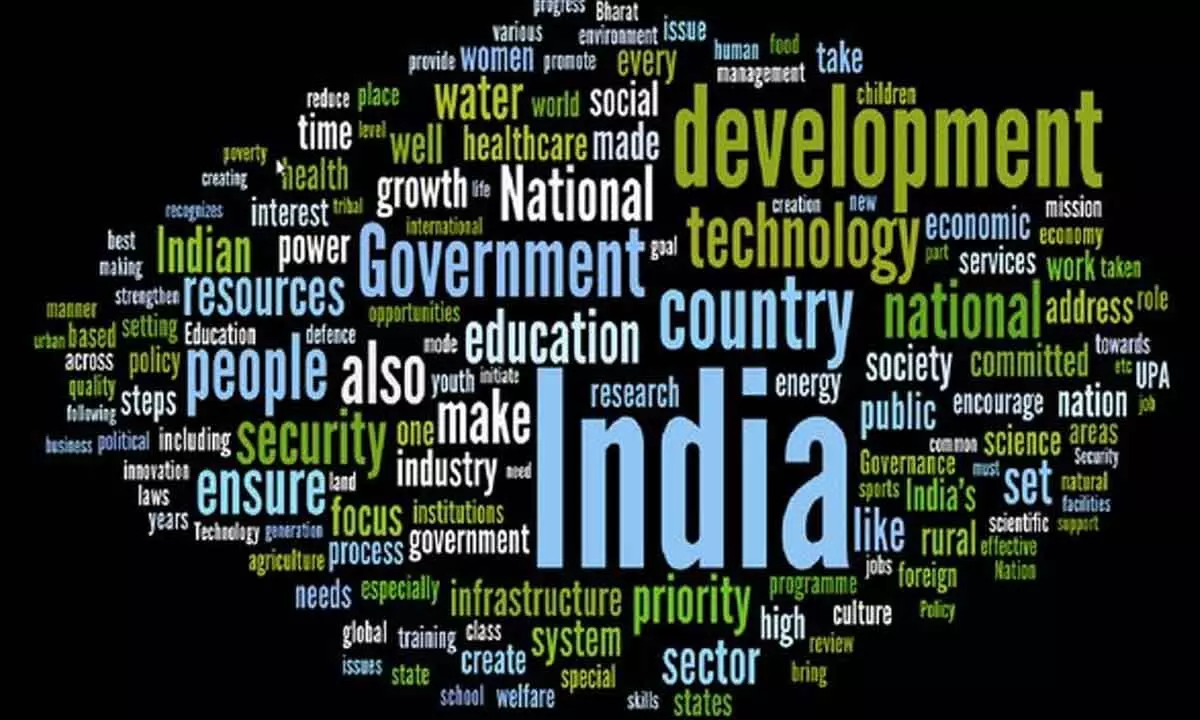Live
- 525 candidates remain in fray for 17 LS seats in Telangana
- Political Prowess on Display: Rajnath Singh and Smriti Irani's nominations galvanise BJP’s poll campaign
- TN government committee identifies 42 elephant corridors in state
- Ola Cabs CEO Hemant Bakshi steps down, firm announces job cuts
- IPL 2024: Kuldeep Yadav's 35 not out propels Delhi to 153/9 against Kolkata
- BJP leader Sambit Patra files nomination for Puri Lok Sabha seat
- Rajiv Pratap Rudy accuses Lalu Prasad of 'killing' developmental schemes in Saran
- Quick action by Telangana Cyber Security Bureau saves citizen's Rs 1 crore
- Types of food diabetics should avoid
- Celebrating National Honesty Day: 20 Quotes to Inspire Integrity
Just In
A key segment passed over in manifestos


With elections just about a month away, all political parties are coming up with their manifestos announcing a slew of measures for the poor and...
With elections just about a month away, all political parties are coming up with their manifestos announcing a slew of measures for the poor and downtrodden and women who appear to be their most targeted group.
Fine, this section needs hand holding. But what every political party has ignored and continues to do so is the well-being of the middle class in the society. The fact is that the middle class section consists of nearly 400 million people and what the political parties need to understand is that it is this section that cross-subsidises most of the welfare schemes, but hardly gets any benefit as no party focuses attention on them.
This section has a decisive influence on moulding public opinion on many national issues. Its voting behaviour may well determine outcomes in the current general elections as well. This section is also important because it is they who play a key role in conducting the elections. It appears that the middle class is only there to do hard work and pay taxes. Even votes of poor people are purchased through note or liquor, but this section is the most neglected. They don’t even get any concessions in tax regime. Their salaries do not grow in proportion to the growing expenses thanks to different taxes including GST on everything they buy from the market.
The irony is that the rich and super-rich classes who are not more than 5% of the population get lots of benefits in different forms. This is one reason why the middle class generally does not show too much of interest to participate in the voting on the day of polling. It is time the political parties thought about their needs as well, or else there would be a dent in the concept of Samabhav, the mantra that all parties keep chanting. The bottom line is that it should not be forgotten that they are a part of the voting class.
This middle class is always at the top of complaint lists, very vocal and critical of the system, politics and politicians. They should not be allowed to get disillusioned and turn into a non-voting category.
Another important aspect that the political parties need to understand is that the country witnesses an unprecedented social mobility which has enabled millions to climb on to the bandwagon of the middle class. India is now increasingly becoming a low middle income rather than a poor country. The annual income of the middle class ranges between Rs 2 lakh to Rs 10 lakh in tier 2, 3 and 4 cities. This is the class which drives the consumption most. They aspire to own a house and a vehicle and small luxuries like ACs washing machines etc. They expect that the loans be made available in a hassle-free process with low interest rates.
They expect that, as is the case in other countries, there should be fiscal connection between the taxes the government collects from them and the benefits they get. While they cannot skip compliance in paying taxes they suffer a lot there is no specific fiscal connection of the government with them. Just before the elections, major political parties like BJP and Congress sometimes announce in their manifestos that they would take measures to lower taxes but in reality, they seldom turn these promises into reality. The middle class, too, should be made a part of ‘Sabka Saath Sabka Vikas’.

© 2024 Hyderabad Media House Limited/The Hans India. All rights reserved. Powered by hocalwire.com






